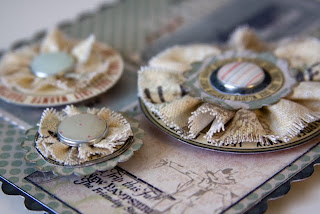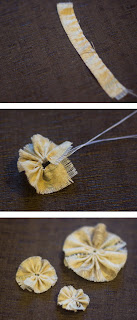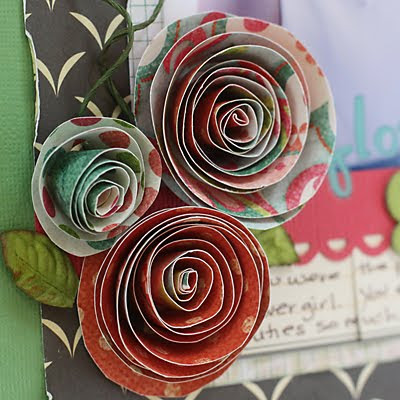Looking For Something?
**DETOUR**
Although this site remains open, I have indeed pushed all these posts onto The Scrapbook Speedway. Please visit The Scrapbook Speedway and leave comments there (I don't visit here very often).
Thank you!
Thank you!
Quickutz Epic 6 with CuttleBug or Sizzlits
Wanna know how to use these together? Check out this VIDEO from scrapbook.com and learn how!
Color Matching Made Easy!
Oh my!! My friend, Jenny, from Have Your Way With Paper gave us all this incredible link!
You upload a photo, and not only does it show you a great color scheme to use with that photo, but it gives you suggestions for ACTUAL products to use for a page! AWESOME!
Click HERE to give it a try! Thanks Jenny!!!
You upload a photo, and not only does it show you a great color scheme to use with that photo, but it gives you suggestions for ACTUAL products to use for a page! AWESOME!
Click HERE to give it a try! Thanks Jenny!!!
Create a Digital Ribbon
 Scrapbook Memories has a great way to make your own 'ribbon.'
Scrapbook Memories has a great way to make your own 'ribbon.'The most realistic ribbons, strings, and twine we have found are scanned or photographed elements. A scanned ribbon looks just like the real thing and gives your page a look of authenticity and without the bulk. The ribbon color can be changed by clicking on Enhance | Adjust Color | Adjust Hue/Saturation (Ctrl U) and adjusting the sliders.
If you cannot find the perfect ribbon to scan or photograph, you may need to create one digitally. To create digital Grosgrain ribbon, just follow these easy steps:
For step-by-step instructions, as well as sample pictures, click HERE.
Canvas Patches Become Flowers
 Pink Paislee has a great idea on turning canvas patches into cute and simple little flowers.
Pink Paislee has a great idea on turning canvas patches into cute and simple little flowers.  The following is a picture tutorial Pink Paislee has supplied for their written tutorial on their website. For details on how this process works and for more ideas using this technique, be sure you visit their website!
The following is a picture tutorial Pink Paislee has supplied for their written tutorial on their website. For details on how this process works and for more ideas using this technique, be sure you visit their website!
Basic Techniques For Vellum
Vellum papers add a unique touch to any album page. From formal wedding and anniversary photos to frosty winter wonderland layouts, vellum can transform solid papers and customize patterned paper.
Because vellum is such a specialty paper, there are tricks to working with it. Vellum is not as porous as your other scrapbooking papers, so adhesives and inks won’t be absorbed as quickly. And because vellum paper is so transparent, most adhesive will show through. Once you know the tricks, you’ll find that creating wonderful vellum pages is pretty easy.
A few tips:
Handle with care. Vellum is beautiful because it is so delicate. And because it’s so delicate, it also requires special attention. As with any light–colored paper, smudges and creases show up more easily than on dark paper; vellum will be protected if stored inside the book it came in or in a file folder.
Picking Paper. When selecting paper to place under a white vellum overlay, choose the brightest patterns and colors. These will show up more clearly than a pale or very dark color. White vellum is also perfect for softening a paper pattern that’s too bright for your photo.
Pastel vellum transforms solid and patterned papers—slip a few different papers under your colored vellum sheet to discover just how many dramatic looks there are. Part of the fun of working with vellum is the delight of finding just the right combination, so play and experiment with your papers to see what you like best.
Vellum for journaling. Vellum provides a wonderful journaling option, as it allows for perfect tracing. Simply lay the sheet of vellum over the alphabet you want and trace with a pen. Because vellum isn’t as porous as regular paper, the ink often “sits” on top. Try journaling with Zig Writers, Sakura pens, Zebra’s Jimnie Gel Rollerball and Pentel Gel Rollers. Whatever you do, always let the piece dry for a few minutes before working with it.
For an extra-special effect, color with chalk, markers or colored pencils on the reverse side of a sheet of white vellum. Chalks and colored pencils will give a soft, muted look, while markers can produce a stained-glass effect.
Vellum and computer printers. Yes, you can run vellum through a computer printer. Just be sure to let the ink dry for a few minutes before handling. And if you’re printing multiple sheets, be sure to remove the vellum from the tray after printing.
Tearing vellum. Vellum can be torn for really beautiful borders. Torn vellum lends a soft look to a page. Go ahead, try it!
My favorite use. One of my favorite ways to use vellum is to mat my photos with it. I mat my photo onto a solid paper, then onto vellum—this time, I cut the border a bit larger so the vellum shows up. Then I place the matted photo onto the background paper, applying adhesive only behind the photo. It gives an extra-special look to special pages.
Brought to you by: LeNae Gerig from Scrapbooking 101
Because vellum is such a specialty paper, there are tricks to working with it. Vellum is not as porous as your other scrapbooking papers, so adhesives and inks won’t be absorbed as quickly. And because vellum paper is so transparent, most adhesive will show through. Once you know the tricks, you’ll find that creating wonderful vellum pages is pretty easy.
A few tips:
Handle with care. Vellum is beautiful because it is so delicate. And because it’s so delicate, it also requires special attention. As with any light–colored paper, smudges and creases show up more easily than on dark paper; vellum will be protected if stored inside the book it came in or in a file folder.
Picking Paper. When selecting paper to place under a white vellum overlay, choose the brightest patterns and colors. These will show up more clearly than a pale or very dark color. White vellum is also perfect for softening a paper pattern that’s too bright for your photo.
Pastel vellum transforms solid and patterned papers—slip a few different papers under your colored vellum sheet to discover just how many dramatic looks there are. Part of the fun of working with vellum is the delight of finding just the right combination, so play and experiment with your papers to see what you like best.
Vellum for journaling. Vellum provides a wonderful journaling option, as it allows for perfect tracing. Simply lay the sheet of vellum over the alphabet you want and trace with a pen. Because vellum isn’t as porous as regular paper, the ink often “sits” on top. Try journaling with Zig Writers, Sakura pens, Zebra’s Jimnie Gel Rollerball and Pentel Gel Rollers. Whatever you do, always let the piece dry for a few minutes before working with it.
For an extra-special effect, color with chalk, markers or colored pencils on the reverse side of a sheet of white vellum. Chalks and colored pencils will give a soft, muted look, while markers can produce a stained-glass effect.
Vellum and computer printers. Yes, you can run vellum through a computer printer. Just be sure to let the ink dry for a few minutes before handling. And if you’re printing multiple sheets, be sure to remove the vellum from the tray after printing.
Tearing vellum. Vellum can be torn for really beautiful borders. Torn vellum lends a soft look to a page. Go ahead, try it!
My favorite use. One of my favorite ways to use vellum is to mat my photos with it. I mat my photo onto a solid paper, then onto vellum—this time, I cut the border a bit larger so the vellum shows up. Then I place the matted photo onto the background paper, applying adhesive only behind the photo. It gives an extra-special look to special pages.
Brought to you by: LeNae Gerig from Scrapbooking 101
Spiral Flowers Are A Hit
 Ashley, from Have Your Way With Paper, forwarded us a link for some cool spiral flowers.
Ashley, from Have Your Way With Paper, forwarded us a link for some cool spiral flowers. Here are the instructions:
1.) Draw a spiral on a 4×4” piece of paper. You can vary the size of your end product by changing the size of the paper. As well, the tighter the spiral, the more layers the end product will have

2.) Cut out the spiral along the lines. I’ve seen these also made with wavy lines, by tearing the spiral out, and you could even try deco scissors for a different look.

3.) Place a glue dot on the outside end of the spiral and begin rolling from the outside. The glue dot will help the flower to not unravel.

4.) Keep rolling until the end. The last bit sometimes doesn’t want to go so I just cut it off. Let go of the flower and work the layers a bit. Put a glue dot on the end of the flower to keep it from unraveling.

5.) The finished flower!

For added texture, try ripping the paper instead of cutting and use a little inking and see what you get.
Here's the tutorial on these awesome flowers. If you attempt this technique, please share your work here and on the blog where the tutorial is shown. Thank you!
Subscribe to:
Comments (Atom)